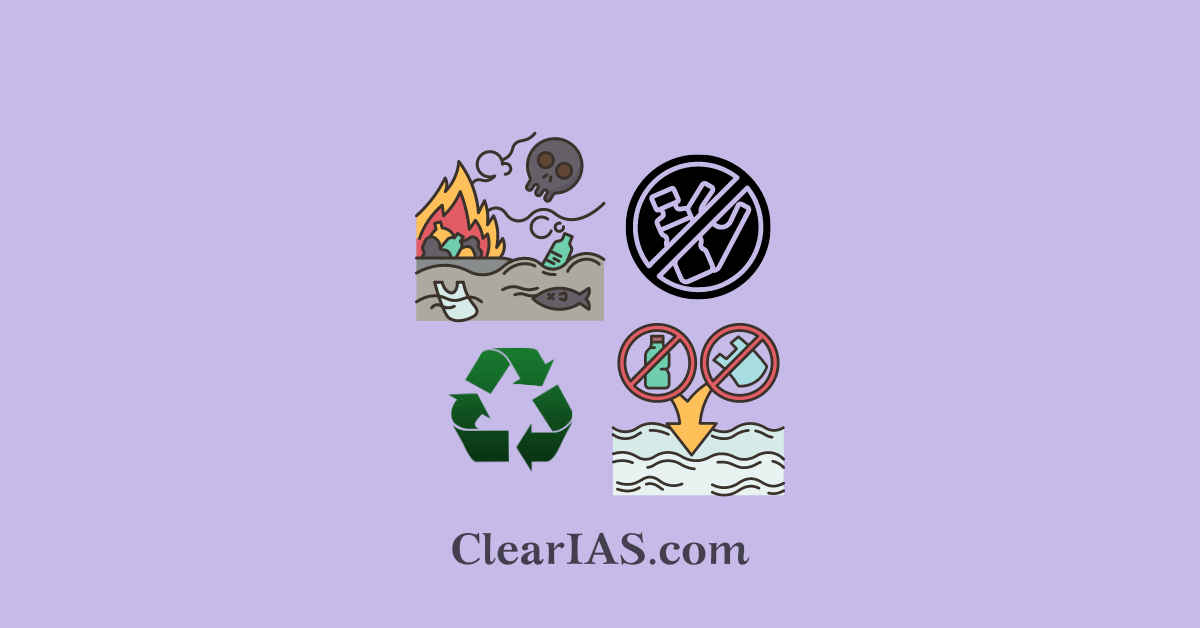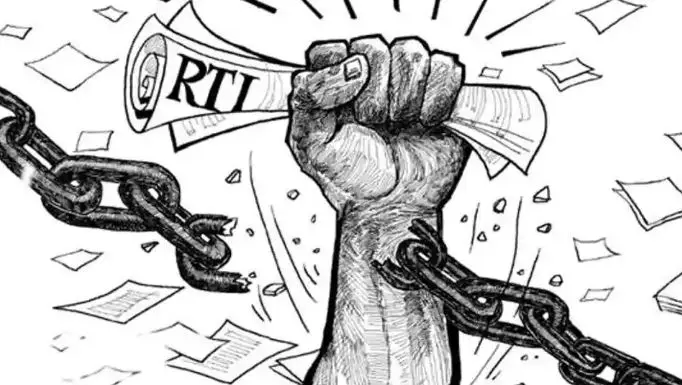Table of Contents
Global negotiators working towards a draft treaty to end plastic pollution
During the UN talks in Paris, global negotiators have agreed to craft a draft treaty with the aim of ending plastic pollution. This is seen as a preliminary but crucial step in tackling one of the most significant sources of human waste. The committee involved is tasked with developing the first international legally binding treaty on plastic pollution, both on land and at sea. Plastic has become ubiquitous in our lives, from single-use water bottles to food packaging and personal care items.
Significance of the treaty | UPSC – IAS
The agreement to draft a treaty holds great importance as plastic waste is expected to nearly triple by 2060, with only a fraction of it being recycled. This growing problem has caught the attention of leaders and politicians around the world, prompting efforts towards environmental sustainability. Plastic pollution is particularly noticeable in Asia and Africa, where rubbish collection services are lacking. However, even wealthier countries struggle with proper waste management and recycling rates.
Features and Objectives | UPSC – IAS
The proposed treaty aims to address the issue of plastic pollution comprehensively. It will focus on reducing plastic waste generation, improving waste management and recycling practices, and promoting the use of alternative materials to plastic. The treaty will be legally binding, meaning that countries who ratify it will be obligated to implement its provisions. Additionally, the treaty will cover both land and marine environments, recognizing that plastic pollution affects various ecosystems.
Effects of plastic pollution | UPSC – IAS
Plastic pollution has become one of the most urgent environmental challenges, impacting both wildlife and human life. Wildlife, including terrestrial, avian, and aquatic species, are greatly affected by plastics. Millions of animals die each year due to plastic, either by ingesting it or becoming entangled in it. Marine animals, such as seals, whales, and turtles, often suffer from abandoned fishing gear or plastic rings. Microplastics, tiny particles that result from the breakdown of larger plastics, have been found in numerous aquatic species. These microplastics can enter the food chain and ultimately reach humans.
Humans are also directly impacted by plastic pollution. Chemicals used in plastics, such as phthalates and BPA, are known to disrupt the endocrine system and have been detected in humans. Moreover, plastic consumption by women is particularly significant due to social norms and their role as decision-makers in households. The gendered effects of plastic pollution are often overlooked and should be addressed in efforts to combat this issue.
Pros and Cons
One of the pros of a global treaty on plastic pollution is the potential for unified action and coordination among countries. The treaty can serve as a framework for countries to implement measures and targets to reduce plastic waste. Additionally, it can facilitate knowledge sharing and collaboration in finding innovative solutions. However, one potential concern is the enforcement of the treaty. Without effective monitoring and penalties for non-compliance, the impact of the treaty may be limited.
Fun Fact
Plastic microfibers or even smaller nanofibers have been found not only in water systems but also drifting through the air. This highlights the pervasive nature of plastic pollution, reaching even the highest and deepest parts of the planet.
Conclusion
The global effort to end plastic pollution through the creation of a draft treaty is a crucial step towards addressing this pressing environmental issue. Plastic pollution affects wildlife, ecosystems, and human life, necessitating comprehensive solutions. While the treaty holds promise, it is important to ensure effective enforcement and consider the gendered impact of plastic pollution. With continued international collaboration and commitment, it is possible to reduce and eventually eliminate plastic pollution.
Mutiple Choice Questions | UPSC – IAS
1. What is the purpose of the UN talks in Paris?
a. To discuss global environmental issues
b. To develop a draft treaty to end plastic pollution
c. To address the impact of plastic pollution on wildlife
d. To increase awareness about plastic waste recycling
Explanation: The purpose of the UN talks in Paris is to develop a draft treaty to end plastic pollution. This is mentioned in the first sentence of the provided information.
2. According to the Organization for Economic Cooperation and Development (OECD), what percentage of global plastic waste is recycled?
a. Half
b. A fifth
c. A third
d. Two-thirds
Explanation: According to the Organization for Economic Cooperation and Development (OECD), about a fifth of global plastic waste is recycled. This is mentioned in the second paragraph of the provided information.
3. Which regions are most affected by plastic pollution?
a. Asia and Africa
b. Europe and North America
c. South America and Australia
d. Antarctica and the Arctic
Explanation: Plastic pollution is most noticeable in Asia and Africa, where rubbish collection services are either ineffective or non-existent. This is mentioned in the third paragraph of the provided information.
4. Why has the United Nations been trying to create a worldwide convention on plastic waste?
a. Because plastic waste has become so pervasive
b. Because plastic waste is not recyclable
c. Because plastic waste is harmful to wildlife
d. Because plastic waste has caused climate change
Explanation: The United Nations has been trying to create a worldwide convention on plastic waste because plastic waste has become so pervasive. This is mentioned in the fourth paragraph of the provided information.
5. What percentage of annual plastic production is made up of single-use plastics?
a. 10%
b. 20%
c. 30%
d. 40%
Explanation: Single-use plastics now make up about 40% of the annual plastic production. This is mentioned in the fourth paragraph of the provided information.
6. How does plastic move around the world?
a. Through underground tunnels
b. Through ocean currents
c. Through air pollution
d. Through international trade routes
Explanation: Most of the plastic trash in the oceans flows from land through major rivers, which act as conveyor belts, picking up more and more trash as they move downstream. This is mentioned in the fifth paragraph of the provided information.
7. What are microplastics?
a. Small particles of broken down plastic waste
b. Disposable plastic items
c. Medications and cosmetics made of plastic
d. Plastic waste found in drinking water
Explanation: Microplastics are small particles of broken down plastic waste. They are formed when plastic waste in the ocean breaks down due to sunlight, wind, and wave action. This is mentioned in the fifth paragraph of the provided information.
8. How does plastic pollution impact wildlife?
a. It causes death due to ingestion
b. It affects their reproductive system
c. It leads to changes in their natural habitat
d. It causes extinction of endangered species
Explanation: Plastic pollution affects wildlife by causing death, particularly due to ingestion of plastic waste. This is mentioned in the sixth paragraph of the provided information.
9. What chemicals used in plastics are known to disrupt the endocrine system?
a. Phthalates, bisphenol A (BPA), and polybrominated diphenyl ether (PBDE)
b. Sodium chloride, carbon dioxide, and hydrogen peroxide
c. Nitrogen, oxygen, and sulfur
d. Aluminum, copper, and zinc
Explanation: Phthalates, bisphenol A (BPA), and polybrominated diphenyl ether (PBDE) are chemicals used in plastics that are known to disrupt the endocrine system. This is mentioned in the seventh paragraph of the provided information.
10. Who are leading the fight against the effects of plastic pollution?
a. Government organizations and NGOs
b. Environmental activists and scientists
c. Women, who are marginalized
d. Wealthy individuals and corporations
Explanation: Women, who are frequently marginalized, are leading the fight against the effects of plastic pollution. This is mentioned in the eighth paragraph of the provided information.
Brief Summary | UPSC – IAS
Global negotiators at the UN talks in Paris have agreed to develop a draft treaty to address plastic pollution. Plastic waste is expected to nearly triple by 2060, with only a small fraction being recycled. The treaty aims to be the first international, legally binding agreement on plastic pollution, addressing both land and sea pollution. Plastic pollution has become a major environmental concern, impacting wildlife and human health. The treaty will focus on preventing improper disposal and reducing the use of single-use plastic products. The Indian government has taken steps to tackle plastic pollution, and partnerships between government programs are needed for further progress.











